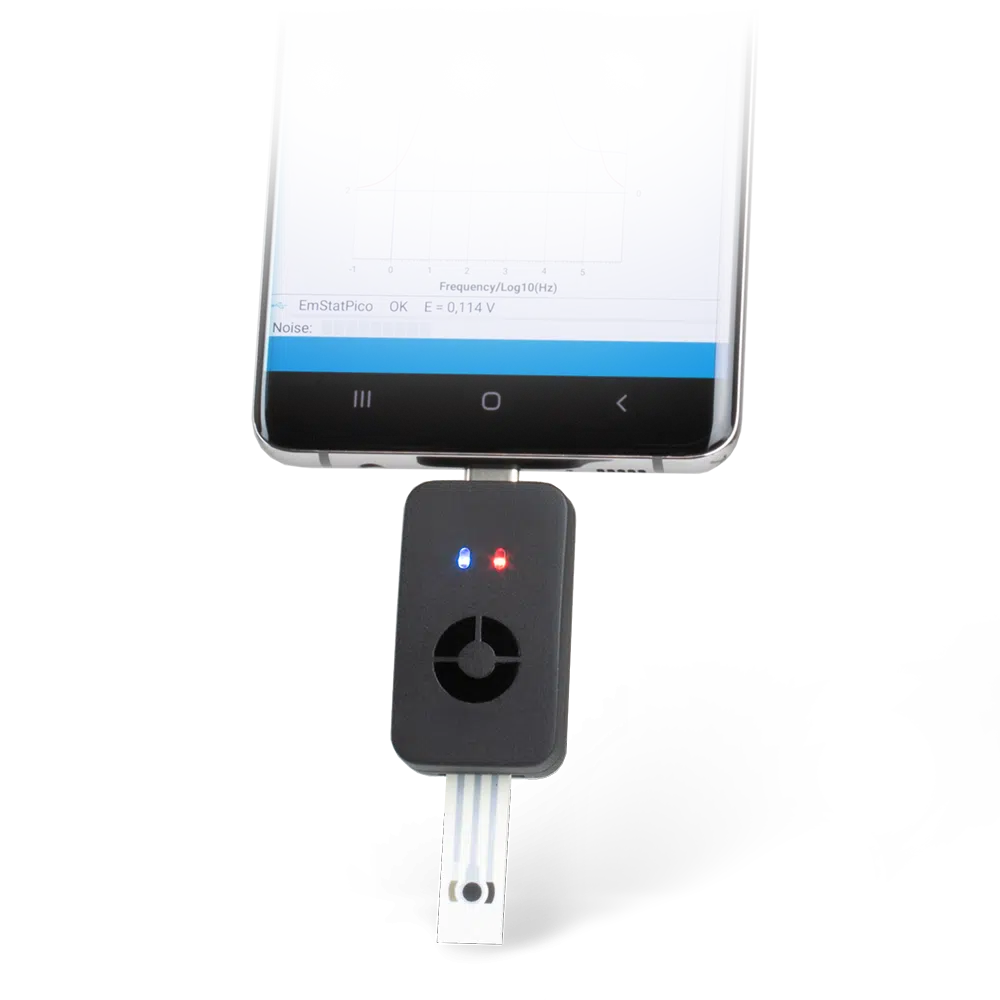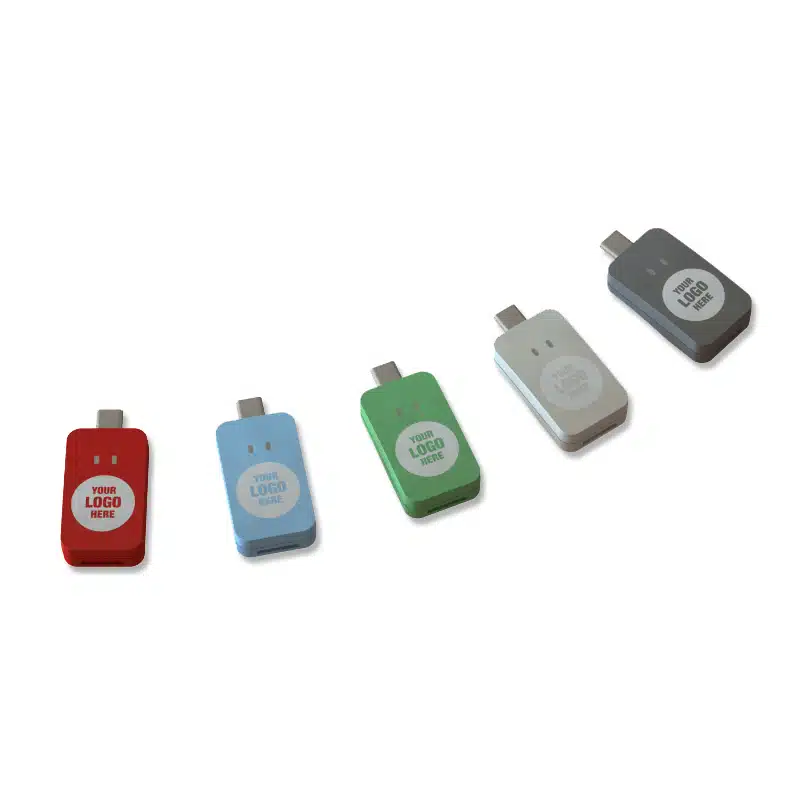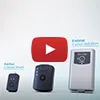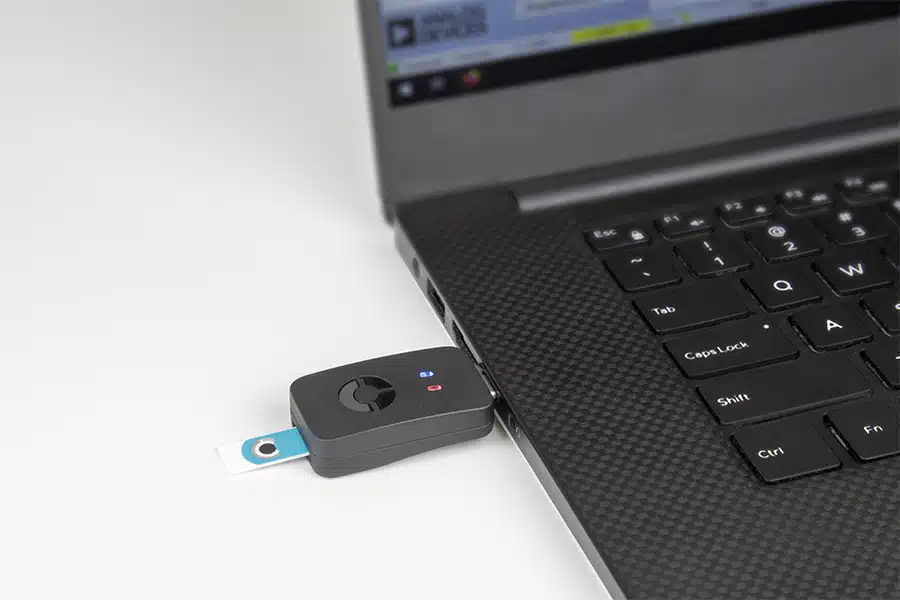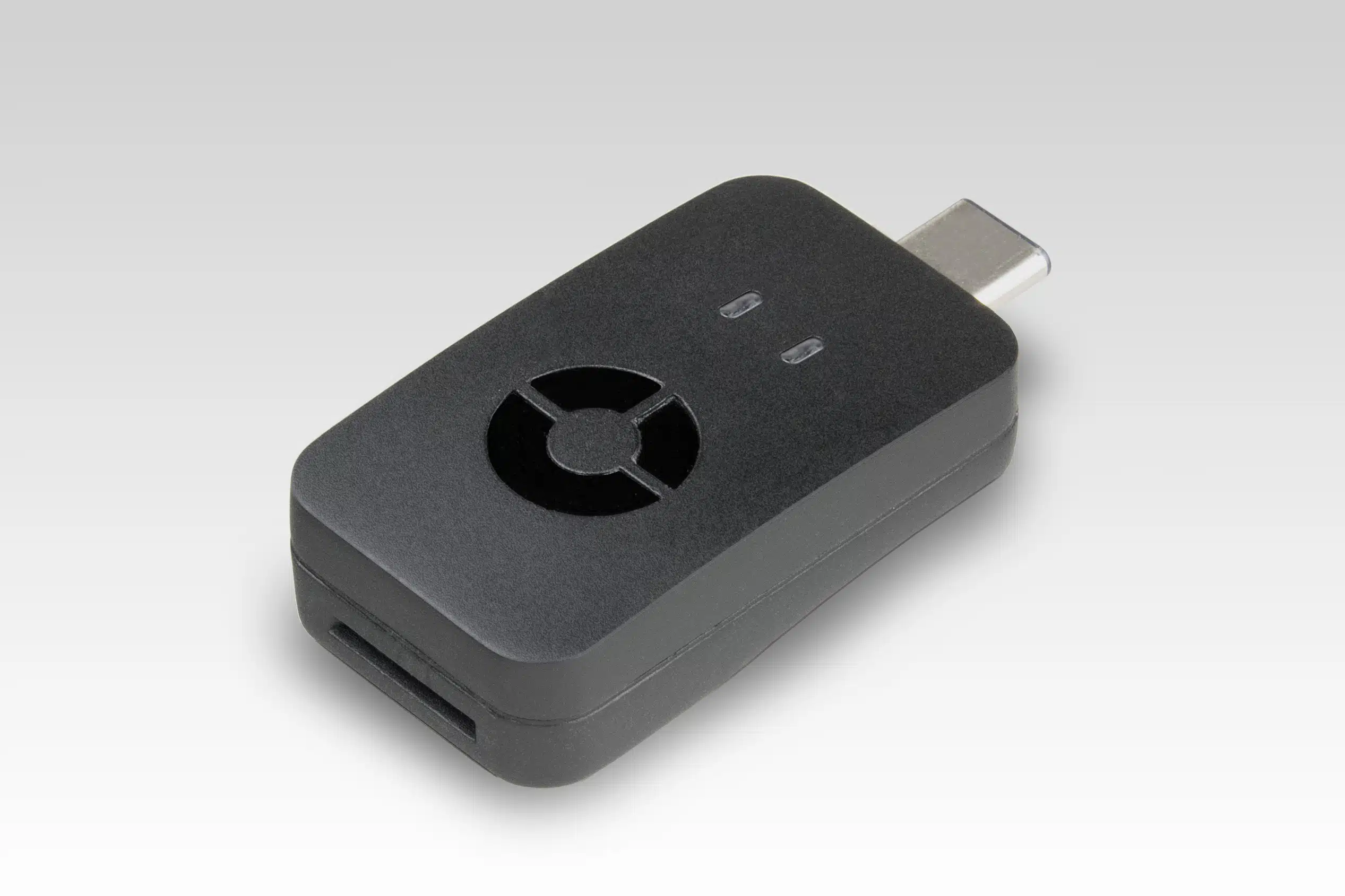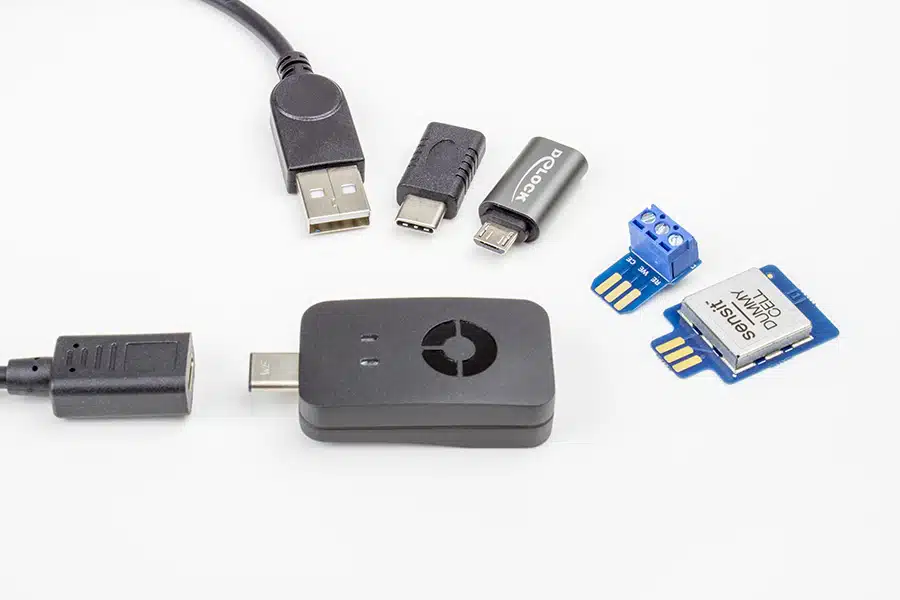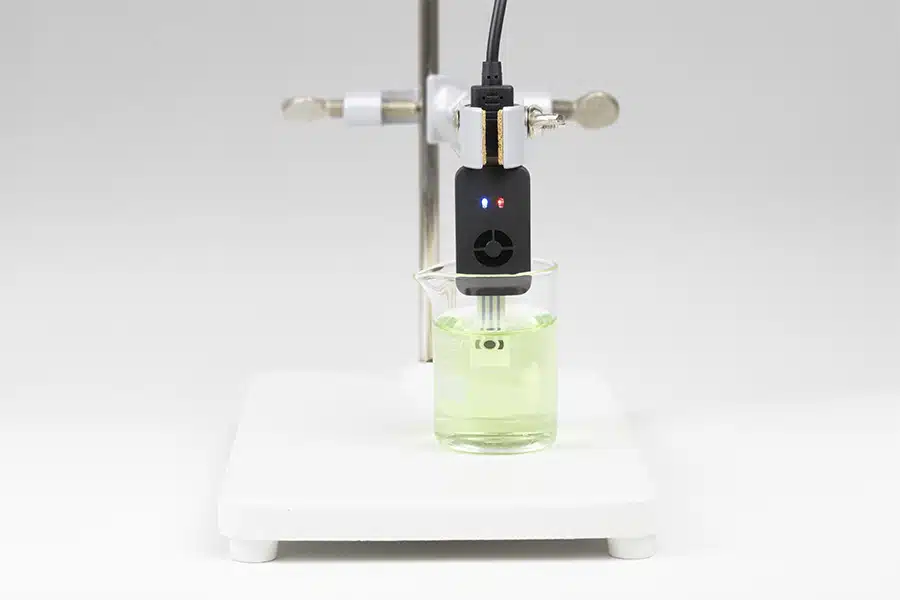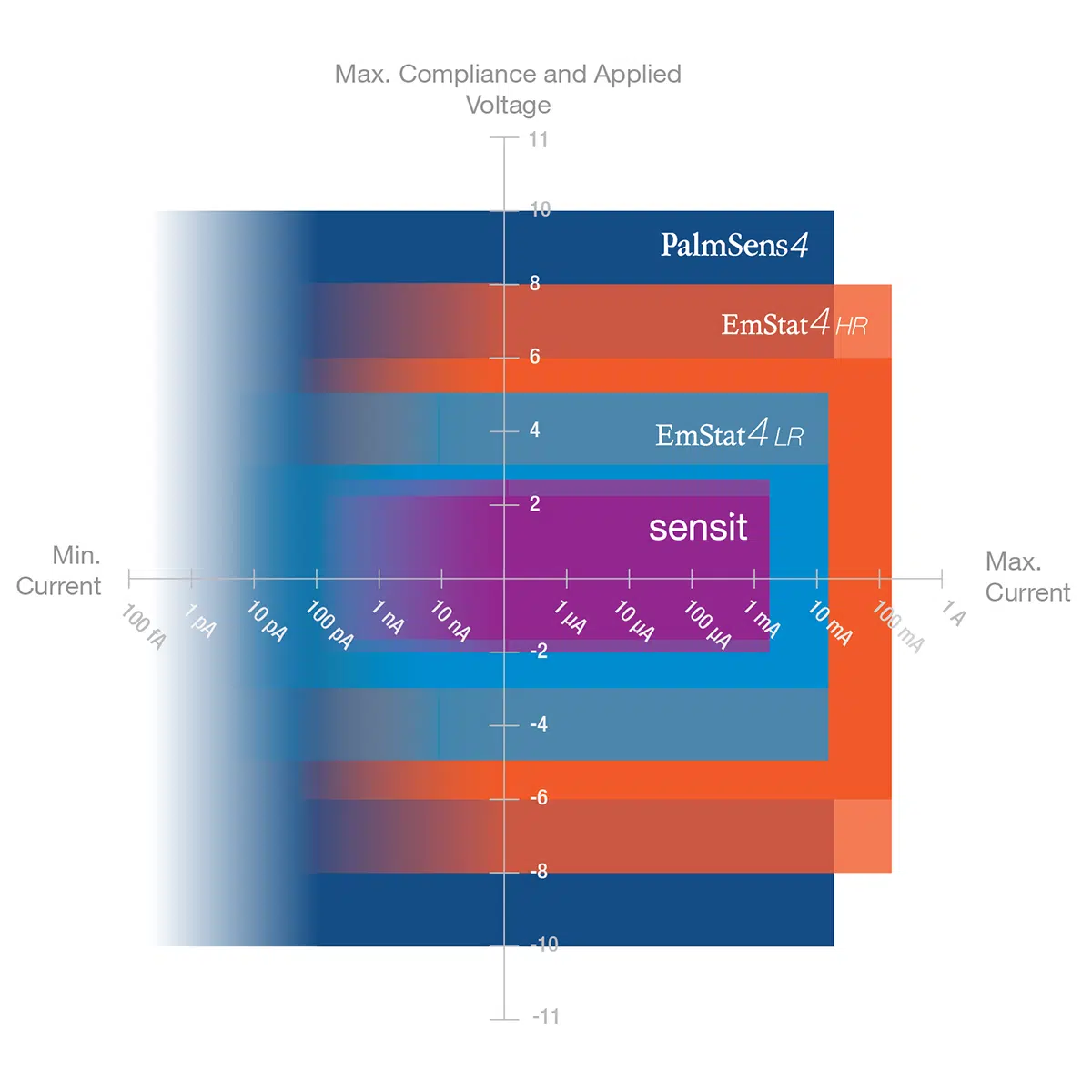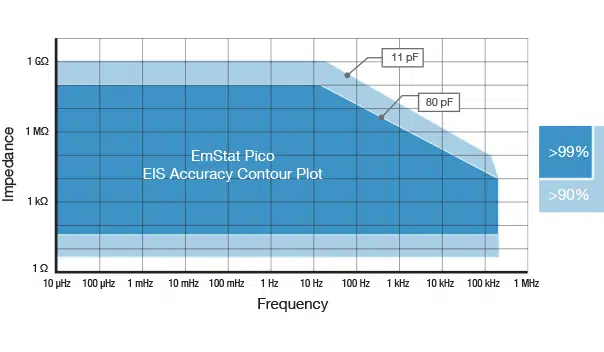Sensit Smart for OEM
Tailored for your application
- Smartphone potentiostat capable of EIS up to 200 kHz
- Built around the EmStat Pico module
- Customization (e.g. logo and color) possible, even for small series
- Easy app building using our tools and examples
Description

The Sensit Smart can be directly inserted in a smartphone or tablet and controlled via the app PStouch. You can use the USB-C Female to USB-A cable to connect the Sensit Smart to a classic USB port on your PC and control the Sensit Smart via our PC software PSTrace.
It is easy to develop your own smartphone app or PC software for Sensit Smart.
The Sensit Smart supports most common electrochemical techniques, including
Cyclic Voltammetry, Square Wave Voltammetry and Impedance Spectroscopy (FRA/EIS).
The Sensit Smart comes standard with below items, for the Sensit Smart for OEM these items are optional:
- Dummy Cell (SPE version)
- SPE to screw-terminal adapter
- USB-C Female to USB-A cable
- USB-C Female to Micro USB adapter
- USB-C Extension cable
- USB-C port protector
- PSTrace software for Windows (activation code for my.palmsens.com)
- PStouch app for Android (find it in the Google Play Store)
Specifications
- FRA / EIS up to 200 kHz
- Potential range -1.7 to +2 V
- Current ranges 100 nA – 5 mA (max ±3 mA)
See EmStat Pico module for more detailed specifications.
| Compatible with most common Screen Printed Electrodes / Sensors | |
|---|---|
| Sensor pitch: | 2.54 mm |
| Electrode connections: | RE, WE, CE |
| Allowed sensor thickness: | Between 0.1 mm and 0.8 mm |
| Maximum sensor width: | 11 mm |
| Other specifications | |
|---|---|
| Power and communication | USB-C |
| Storage | 4000 datapoints on-board |
| Size | 43 x 25 x 11 mm (excl. USB connector) |
| Weight | 10 g |
| Battery | No |
| Auxiliary port | No |
| Sensor connector | SPE (pitch: 2.54 mm) |
| Operation temperature range | 0 °C to +40 °C |
EIS Accuracy Contour Plot
Software Development
Develop software for PC and smartphone
Whether you want to write a simple or advanced Windows application, develop an Android or iPhone app you can do it with our software development tools and code examples.
The Sensit BT and Sensit Smart can also be controlled directly with our PSTrace software for Windows and PStouch app for Android.
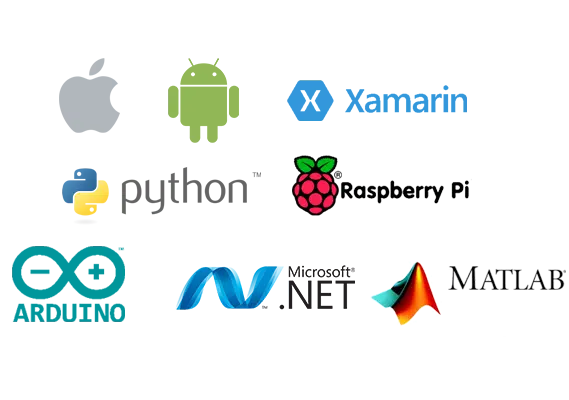
Software Development Kits for .NET
The PalmSens Software Development Kits (SDKs) for .NET can be used with any of our instruments or OEM potentiostat modules to develop your own software. The SDK’s come with a set of examples that shows how to use the libraries.
PalmSens SDKs with examples are available for the following .NET Frameworks:
- WinForms
- WPF
- Xamarin (for Android)
- UWP
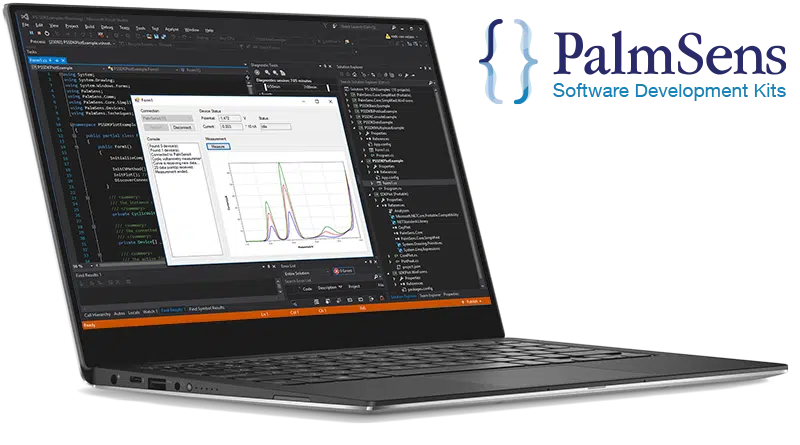
MethodSCRIPT™ communications protocol
The Sensit Series have an on-board parser for the MethodSCRIPT™ scripting language. This language allows developers to program a human-readable script for the Sensit Series on any platform or operating system. The simple script language allows for running electrochemical techniques supported by the Sensit Series and makes it easy to combine different measurements and other tasks.
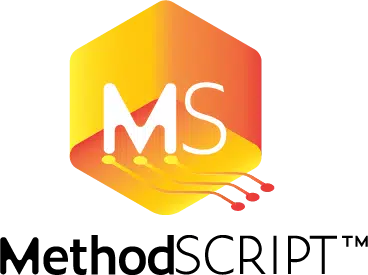
Compatibility
My sensor fits the connector.
The required electrochemical technique for my application is supported.
The analyte conductivity does not require a compliance voltage of 2/2.3 V.
Downloads
Software (9)
| Name | Last updated | |
|---|---|---|
| EmStat Pico Firmware v1.5 See app note "EmStat Pico firmware updating" for more information about updating built-in and bare EmStat Pico modules. | 26-03-25 | |
| PSTrace PC software for all single channel instruments PSTrace software is shipped as standard with all single channel and multiplexed instruments. The software provides support for all techniques and device functionalities. | 08-07-24 | |
|
MethodSCRIPT code examples
MethodSCRIPT code examples include:
- MethodSCRIPTExample_C - MethodSCRIPTExample_C_Linux - MethodSCRIPTExample_C# - MethodSCRIPTExample_Arduino - MethodSCRIPTExample_Python - MethodSCRIPTExample_iOS - MethodSCRIPTExample_Android Every code example comes with a "Getting Started" document. |
07-07-24 | |
| PSExampleApp: Configurable and Open-Source App for Sensor Applications The PSExampleApp is a simple open-source application that guides a user to do a measurement with a PalmSens device to measure concentrations in a liquid sample. The app can be re-configured without code for use with (bio)sensors measuring a specific analyte using a linear calibration curve.. This file contains the example configuration files to customize the app and links to both the Android and iOS version of the app. | 21-07-22 | |
| EmStat Pico Firmware v1.3.4 See app note "EmStat Pico firmware updating" for more information about updating built-in and bare EmStat Pico modules. | 13-12-21 | |
| EmStat Pico Firmware v1.2 See app note "EmStat Pico firmware updating" for more information about updating built-in and bare EmStat Pico modules. | 13-12-21 | |
| Getting started with PalmSens SDK for WPF This manual explains how to use the SDK with the included libraries and examples. | 07-06-21 | |
| Getting started with PalmSens SDK for WinForms This manual explains how to use the SDK with the included libraries and examples. | 07-06-21 | |
| Getting started with PalmSens SDK for Android This manual explains how to use the SDK with the included libraries and examples. | 07-06-21 |
Documentation (12)
| Name | Last updated | |
|---|---|---|
| EmStat Pico communication protocol v1.5 This document describes the “online” communication protocol of the EmStat Pico. Initial communication with an EmStat Pico is always done using this online communication. Measurements and other scripts can be started by sending a MethodSCRIPT, | 26-03-25 | |
| MethodSCRIPT v1.7 The MethodSCRIPT scripting language is designed to improve the flexibility of the PalmSens potentiostat and galvanostat devices for OEM users. It allows users to start measurements with arguments that are similar to the arguments in PSTrace. PalmSens provides libraries and examples for handling low level communication and generating scripts for MethodSCRIPT devices such as the EmStat Pico and EmStat4. | 26-03-25 | |
| Sensit Smart – Brochure | 08-01-25 | |
| MethodSCRIPT v1.5 The MethodSCRIPT scripting language is designed to improve the flexibility of the PalmSens potentiostat and galvanostat devices for OEM users. It allows users to start measurements with arguments that are similar to the arguments in PSTrace. PalmSens provides libraries and examples for handling low level communication and generating scripts for MethodSCRIPT devices such as the EmStat Pico and EmStat4. | 25-03-24 | |
| MethodSCRIPT v1.4 The MethodSCRIPT scripting language is designed to improve the flexibility of the PalmSens potentiostat and galvanostat devices for OEM users. It allows users to start measurements with arguments that are similar to the arguments in PSTrace. PalmSens provides libraries and examples for handling low level communication and generating scripts for MethodSCRIPT devices such as the EmStat Pico and EmStat4. | 01-02-23 | |
| EmStat Pico Brochure Brochure of the EmStat Pico module and software tools | 12-09-22 | |
| EmStat Pico communication protocol v1.3 This document describes the “online” communication protocol of the EmStat Pico. Initial communication with an EmStat Pico is always done using this online communication. Measurements and other scripts can be started by sending a MethodSCRIPT, | 13-06-22 | |
| Sensit Smart – Sensor Connector Dimensions This drawing contains the dimensions of the Sensit Smart sensor connector, and recommendations for the SPE to fit into the connector. | 11-11-21 | |
| MethodSCRIPT v1.2 MethodSCRIPT v1.2 protocol description | 28-04-20 | |
| MethodSCRIPT v1.1 MethodSCRIPT v1.1 protocol description | 17-04-20 | |
| EmStat Pico communication protocol v1.2 Describes the EmStat Pico communications protocol which is based on MethodSCRIPT | 08-04-20 | |
| EmStat Pico communication protocol v1.1 Describes the EmStat Pico communications protocol which is based on MethodSCRIPT | 28-08-19 |
Application Note (4)
| Name | Last updated | |
|---|---|---|
| Vitamin C Detection with ItalSens IS-C This application note describes how to create a calibration for quantitative measurements of vitamin C. Due to the detailed description and harmless solutions this an excellent electrochemical experiment with liquids for beginners in the field of electrochemistry. | 27-01-21 | |
| Limitations for EIS on EmStat Pico | 18-12-20 | |
| Sensit Smart Glucose Calibration Curve This app note shows how to measure glucose concentrations using the Sensit Smart | 08-04-20 | |
| How to connect cables to Sensit Smart Explains how to connect cables to the Sensit Smart | 08-04-20 |





























